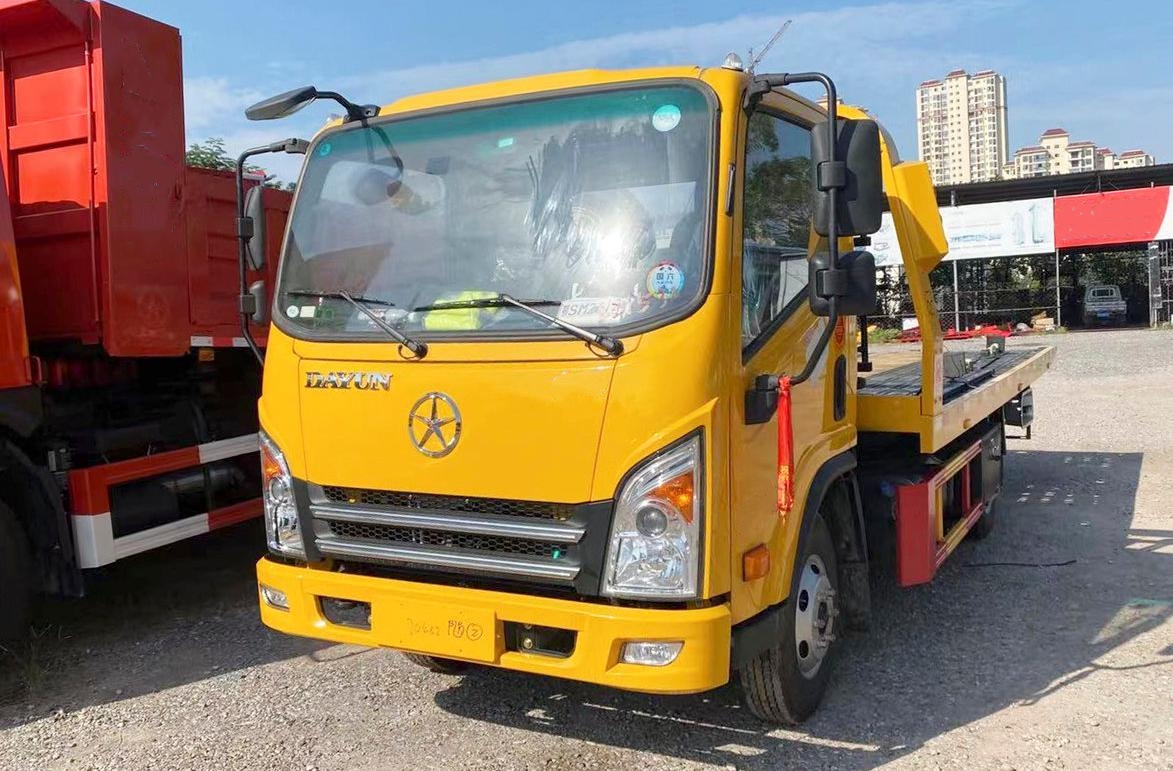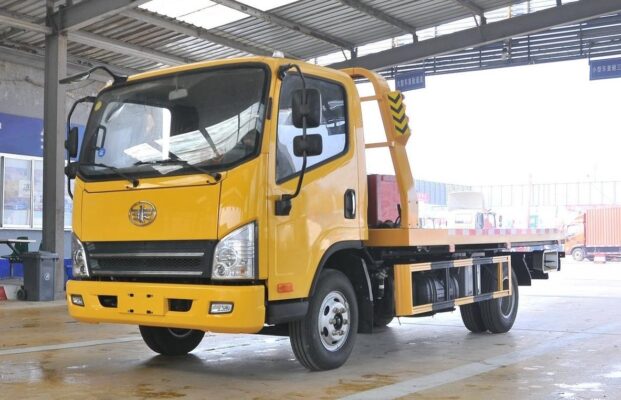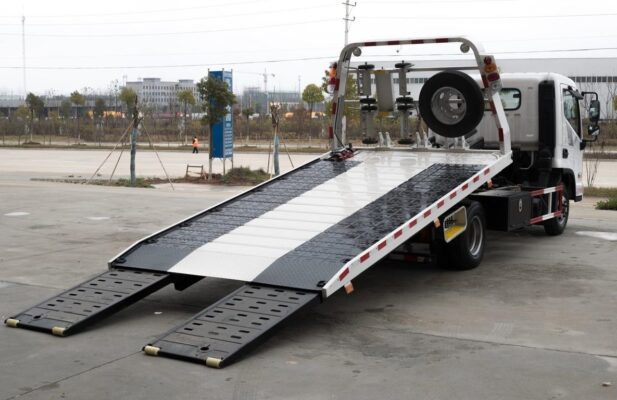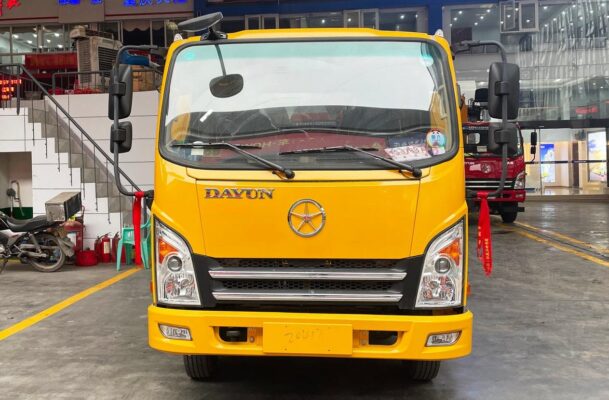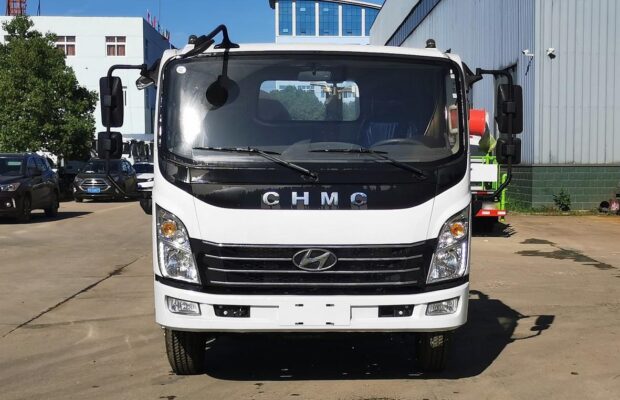Automobile cranes are essential for lifting and transporting heavy loads in various construction and industrial applications. Проте, ensuring their safe operation is paramount, especially concerning the locking mechanisms used after braking. The design of these locking mechanisms is crucial because improper locking can lead to significant hazards, including load drops, uncontrolled movements, or even catastrophic failures that can result in injuries or fatalities.
Understanding the Problem: Hydraulic Leakage During Braking
The core issue with the locking mechanism of automobile cranes lies in the operation of the reversing valve. Typically, this valve employs a clearance seal between the valve core and the valve body. У нормальних умовах, the weight of the lifted load, combined with the weight of the crane itself, can lead to a situation where high-pressure hydraulic oil leaks slowly through the tiny gap between the valve core and the valve body. This leakage is particularly problematic during braking, as it makes it difficult to effectively lock the hydraulic cylinders or hydraulic motors of various mechanisms.
The consequences of this hydraulic leakage can range from minor operational issues to severe safety hazards. Minor cases might lead to the crane being unable to function properly, while severe cases could result in vehicle overturning, injuries, or fatalities. тому, implementing effective safety measures is crucial to eliminate these hazards.
Key Safety Measures
1. Incorporate Hydraulic Locks in the Return Oil Circuit
One of the most effective safety measures is the integration of hydraulic locks into the return oil circuit. The hydraulic lock is a type of one-way valve that operates under specific pressure conditions. When a certain pressure of oil is introduced into its control oil circuit, the valve allows fluid to pass; інакше, it remains closed. This feature makes it an ideal solution for preventing leakage in the braking state.
How it Works: By connecting the hydraulic lock in reverse in the return oil circuit of the hydraulic cylinder (or hydraulic motor) and linking its control oil circuit with the inlet oil circuit, the return oil circuit can be effectively cut off during braking. This action prevents any potential leakage and ensures that the hydraulic cylinder (or hydraulic motor) is locked in place.
Choosing the Right Valve Core: The effectiveness of hydraulic locks largely depends on the design of the valve core and its sealing capabilities. While ball valve or slide valve types may still allow some leakage due to the grooves formed by valve core impacts, a cone core valve can provide superior sealing. The IY-F type high-pressure hydraulic lock with an unloading valve core is recommended based on the operating conditions of automobile craneс, as it ensures no leakage over extended periods.
Leg Oil Circuit Locking Requirements: The leg oil circuit in automobile cranes has two distinct locking requirements: supporting locking and hanging locking. Depending on the specific oil circuit, each leg can utilize either a single hydraulic lock with a hydraulic control one-way valve or a bidirectional hydraulic lock formed by cross-connecting two hydraulic control one-way valves. The latter is generally preferred for providing more robust locking capabilities. It’s essential that each leg’s locking device is set up independently to ensure comprehensive safety.
2. Incorporate Balance Valves in the Return Oil Circuit
In addition to hydraulic locks, balance valves are another effective component to consider. A balance valve combines a one-way valve with an external control internal leakage sequence valve. Installed similarly to hydraulic locks, balance valves are placed in the return oil circuit to cut off the return flow after braking.
Advantages of Balance Valves: These valves help maintain stability during lifting operations by preventing unexpected hydraulic movement. If no other special requirements exist for the oil circuit, a cost-effective hydraulic lock should generally be preferred due to its simplicity and effectiveness.
3. Improve the Sealing of Hydraulic Components
Even with the addition of hydraulic locks and balance valves, it’s crucial to recognize that these measures alone cannot guarantee secure locking after braking. The sealing integrity of hydraulic cylinders and motors also plays a vital role in the locking effect. Hydraulic component leakage can occur both internally and externally, with internal leakage being particularly challenging to detect.
Risks of Internal Leakage: Internal leakage can lead to issues such as leg retraction, arm extension, and inability of amplitude change mechanisms to lock securely, causing sinking phenomena. тому, improving the sealing effectiveness of hydraulic cylinders is essential, focusing primarily on minimizing internal leakage.
Standards for Leakage: It’s important to adhere to strict standards regarding oil leakage from the hydraulic cylinders of automobile craneс. Safety inspections should stipulate that the moving distance of the piston under rated pressure should not exceed 0.5 mm within 10 minutes. If the movement exceeds this value, it indicates poor sealing performance, and prompt replacement of components, such as the Y-shaped ring, is necessary.
4. Install External Brakes on the Lifting Hydraulic Motor
Preventing internal leakage in hydraulic cylinders and motors can be challenging over time due to seal wear. Отже, installing an external brake serves as a critical additional safety measure. This brake can be applied specifically to the hydraulic motor responsible for lifting loads; проте, it is not suitable for other applications such as arm extension or amplitude adjustment.
Design of the Brake Mechanism: The brake acting on the lifting mechanism operates similarly to a small single-rod single-action hydraulic cylinder. It is normally closed, and the braking force is generated by the internal spring force within the cylinder. To achieve optimal locking effectiveness, a larger spring force is preferable, although excessive spring force may increase energy consumption during brake release.
Role of External Brakes: The incorporation of external brakes acts as a supplementary safety feature to enhance the overall locking solution. They provide an additional layer of security that can prevent uncontrolled movements resulting from internal leakage, contributing to a safer operational environment for the crane.
Висновок
The safety of automobile craneс, particularly concerning their locking mechanisms after braking, is a critical aspect of their operation. By understanding the potential hazards associated with hydraulic leakage and implementing robust safety measures, operators can significantly reduce the risks of accidents and ensure safe lifting operations.
Incorporating hydraulic locks and balance valves, improving the sealing of hydraulic components, and installing external brakes are key strategies to enhance safety in these machines. These measures not only address the immediate issues of hydraulic leakage but also contribute to the long-term reliability and functionality of automobile craneс.
As technology evolves, continuous improvements and innovations in hydraulic systems and crane design will further enhance safety and performance in lifting operations across various industries. Ensuring regular maintenance and adherence to safety protocols will be essential in promoting a safe working environment for all personnel involved in crane operations.

